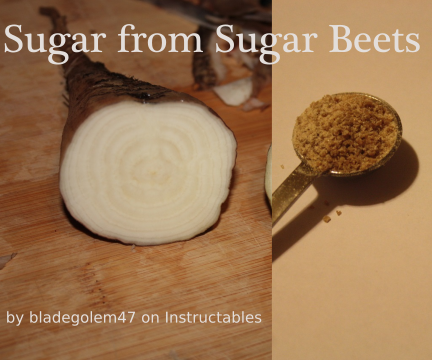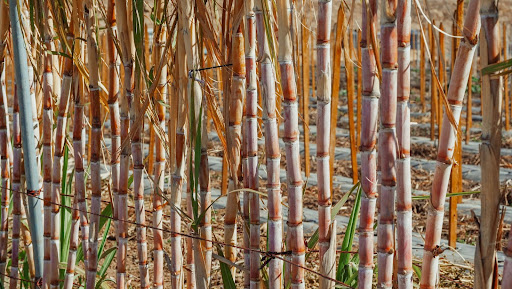Unloading Sugar Beet Vs Sugar Cane: Vital Information on Their Uses and Effect On the Sugar Market
The difference between sugar beet and sugar cane plays an important role in the worldwide sugar market. Each plant has one-of-a-kind farming practices and geographical choices. Their handling methods differ considerably, affecting dietary accounts and economic ramifications. Environmental sustainability is ending up being progressively relevant in customer choices. Understanding these variables can light up the intricacies of the sugar industry and its future direction. What continues to be to be checked out are the moving trends that might improve this landscape.
Summary of Sugar Beet and Sugar Cane
Sugar beet and sugar cane are two primary resources of sucrose, each cultivated in distinctive atmospheres and possessing distinct characteristics. Sugar beet, an origin vegetable, flourishes in warm climates, mostly in Europe and North America. It is normally gathered in the fall and undergoes handling to extract sugar from its high sucrose web content. On the other hand, sugar cane is an exotic yard that thrives in warmer areas, such as Brazil and India. Its high stalks are gathered year-round, using a continual supply of sugar.The sucrose extracted from sugar cane is typically viewed as having a more complex taste account contrasted to that from sugar beet. Both sources contribute substantially to the worldwide sugar market, affecting costs and availability. Understanding their distinctions is important for stakeholders in farming, food manufacturing, and economics, as these crops play an essential function in food systems worldwide.
Growing Practices and Geographic Distribution
Although both sugar beet and sugar cane are vital resources of sucrose, their farming techniques and geographic distribution vary substantially. Sugar beet prospers in warm climates, specifically in Europe and The United States And Canada, where its cooler expanding seasons enhance root growth. Farmers typically exercise crop turning and utilize advanced agricultural modern technologies to maximize returns, preferring well-drained, fertile soils.In comparison, sugar cane flourishes in tropical and subtropical areas, with Brazil, India, and China being the leading producers. Its farming needs warmer temperatures and ample rains, making irrigation necessary in drier areas. Sugar cane is generally grown in monoculture systems, which can lead to soil deficiency otherwise taken care of sustainably. Furthermore, collecting practices differ; sugar cane is commonly cut by hand or equipment, while sugar beet is frequently gathered utilizing customized tools. These geographic and cultivation variations considerably influence the international sugar market and regional economies.
Handling Approaches and Production Techniques
The handling approaches and production strategies for sugar beet and sugar cane highlight significant distinctions that influence the end product's quality and attributes. Sugar beetroots undergo a straightforward procedure, where they are collected, cleaned, and sliced right into thin chips prior to going through hot water extraction to dissolve the sugar. The resulting juice is after that clarified, vaporized, and crystallized to create granulated sugar.Conversely, sugar cane handling entails crushing the stalks to draw out juice, followed by a series of home heating and boiling actions. This technique consists of the elimination of impurities and additional evaporation, bring about condensation. Furthermore, sugar cane processing usually stresses the manufacturing of molasses and bagasse, which can be made use of for energy or various other products.These varied approaches mirror not just the differences in the resource products but additionally their effects for performance, sustainability, and last sugar attributes in the marketplace.
Nutritional Profiles and Wellness Ramifications
An analysis of the dietary accounts of sugar beet and sugar cane reveals unique distinctions in their nutrient make-up. Each resource supplies distinct wellness advantages that can influence nutritional choices. Comprehending these variants is vital for making informed decisions relating to sugar intake and total health and wellness.

Nutrient Composition Comparison
Nutritional profiles of sugar beet and sugar cane expose distinct distinctions that can influence health and wellness outcomes. Sugar beetroots have higher levels of necessary nutrients such as fiber, potassium, and magnesium, which add to digestive health and cardio feature. In comparison, sugar cane primarily supplies sucrose, with minimal dietary value past power arrangement. The fiber material in sugar beetroots aids in managing blood sugar degrees, while sugar cane lacks this benefit. Additionally, sugar beetroots have a reduced glycemic index contrasted to sugar cane, which may be helpful for individuals handling blood glucose. These variants in nutrient make-up emphasize the importance of considering the resource of sugar, particularly for those mindful of their nutritional selections and general health.
Wellness Conveniences Introduction
Health advantages originated from sugar beet and sugar cane intake differ significantly due to their differing dietary profiles. Sugar beets are abundant in necessary nutrients, consisting of dietary fiber, vitamins, and minerals, specifically folate and potassium. This make-up can support digestive wellness, enhance cardiovascular feature, and aid in blood glucose law. On the other hand, sugar cane largely provides a source of carbohydrates and energy, with fewer nutrients. It has antioxidants, which might aid fight oxidative tension and inflammation. The wellness ramifications of consuming these sugars likewise rely on their kinds-- whole foods versus improved sugars-- impacting overall advantages. Ultimately, small amounts is crucial, as too much intake of either can bring about wellness concerns, underscoring the significance of balanced usage
Economic Effect On Neighborhood and Global Markets
Although both sugar beet and sugar cane work as important resources of sugar, their financial effect on regional and worldwide markets differ considerably. Sugar cane mainly flourishes in exotic environments, making it a staple in countries like Brazil and India, where the farming framework is greatly tailored towards massive ranches. This adds to substantial export profits and employment possibility in these areas. Conversely, sugar beet is often grown in pleasant areas, specifically in Europe and North America, where its production supports neighborhood economic climates through smaller-scale farming and handling industries.The worldwide sugar market is influenced by tariffs, profession arrangements, and aids, which can favor one kind of sugar over the other. Variations in costs also influence both neighborhood farmers and international markets, bring about varying economic security in areas depending on sugar production. Consequently, the economic landscape formed by sugar beet and sugar cane is complicated and complex, reflecting more comprehensive farming trends.
Environmental Factors To Consider and Sustainability
The environmental considerations bordering sugar beet and sugar cane manufacturing highlight considerable differences in land use, water usage, and carbon footprints. Understanding these variables is essential for reviewing the sustainability of each crop. The influences of growing practices on ecosystems and resources have to be carefully taken a look at to notify future agricultural decisions.
Land Use Impacts
When reviewing the land use influences of sugar beet and sugar cane growing, it ends up being obvious that each crop presents distinct environmental factors to consider and sustainability challenges. Sugar beet, usually grown in temperate regions, usually needs significant land conversion in areas previously utilized for diverse plants, potentially causing minimized biodiversity. On the other hand, sugar cane is mostly cultivated in exotic regions, where its considerable land needs can cause deforestation and environment loss. Furthermore, sugar cane fields might displace food crops, elevating problems regarding food protection. Both crops add to dirt destruction with monoculture methods, requiring sustainable farming techniques. Eventually, the land usage effects of both sugar beet and sugar cane growing underscore the need for balance between financial stability and environmental stewardship.
Water Usage Differences
Water consumption represents an important factor in examining the sustainability of sugar beet and sugar cane manufacturing. Sugar cane typically needs considerably more water than sugar beet, mainly because of its development conditions in tropical environments where watering is typically required. On the other hand, sugar beet is mainly grown in warm areas and generally counts extra on rainfall, making it much less depending on considerable watering systems. This difference in water usage effects local water sources and redirected here can result in issues over water scarcity. The efficiency of water usage in sugar beet farming typically results in lower total water impacts contrasted to sugar cane. Recognizing these variations is vital for evaluating the ecological implications and sustainability of these 2 sugar sources.
Carbon Impact Evaluation
Assessing the carbon footprint of sugar beet and sugar cane manufacturing is vital for comprehending their general environmental effect. Sugar beet growing usually results in a reduced carbon footprint compared to sugar cane, greatly because of the web minimized dependence on fossil fuels for processing and transportation. Additionally, sugar beet is usually grown in warm climates, lessening the demand for considerable watering and decreasing greenhouse gas discharges. On the other hand, sugar cane farming commonly entails greater energy consumption, specifically in exotic regions, where farming and handling can be resource-intensive. Land-use changes linked with sugar cane expansion can exacerbate carbon emissions. Inevitably, both crops present special sustainability difficulties that should be addressed to minimize their ecological impact in the worldwide sugar market.
Future Trends in the Sugar Market
How will the sugar sector progress in the coming years? Industry professionals forecast a number of transformative trends forming its future. A significant change in the direction of sustainability is prepared for, driven by increased consumer understanding and governing stress. This will likely cause raised investments in eco-friendly manufacturing techniques, benefiting both sugar beet and sugar cane growers.Additionally, technological advancements, such as precision agriculture and biotechnology, are anticipated to improve crop returns and reduce resource intake. The market may also see a rise in different sweeteners, as consumers significantly seek much healthier options.Moreover, the global demand for sugar is forecasted to rise and fall, influenced by transforming nutritional preferences and economic problems. As nations apply stricter sugar tax obligations, suppliers will require to adjust their methods to continue to be affordable. On the whole, the sugar sector appears positioned for substantial development, highlighting sustainability and technology in feedback to market dynamics.
Frequently Asked Inquiries
What Are the Main Differences in Taste In Between Sugar Beet and Sugar Cane?
The major differences in preference between sugar beet and sugar cane can be refined. Sugar cane is typically called having a richer, much more intricate taste, while sugar beet tends to be somewhat milder and much less fragrant.
Exactly How Do Sugar Beet and Sugar Cane Affect Baking Recipes In Different Ways?
The differences in between sugar beet and sugar cane in baking recipes mostly exist in their moisture content and flavor profiles - Sugar beet vs sugar cane. Sugar cane typically enhances caramelization, while sugar beet often tends to yield a more neutral sweetness
Can Sugar Beet and Sugar Cane Be Made Use Of Reciprocally in Food Preparation?
Sugar beet and sugar cane can frequently be made use of interchangeably in cooking; nevertheless, refined distinctions over at this website in taste and texture may affect the last outcome of meals, depending on the specific recipe and desired results.

What Are the By-Products of Handling Sugar Beet and Sugar Cane?
The byproducts of processing sugar beet consist of molasses, animal feed, and biofuels, while sugar cane processing yields bagasse, molasses, and ethanol (Sugar beet vs sugar cane). Both crops add substantially to numerous sectors past sugar manufacturing
How Do Sugar Beet and Sugar Cane Contribute to Biofuel Production?
Sugar beet and sugar cane act as considerable sources for biofuel production. Their residues, after sugar extraction, can be transformed right into bioethanol, adding to renewable power initiatives and decreasing dependence on nonrenewable fuel sources in numerous regions.